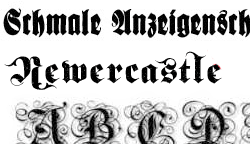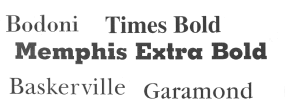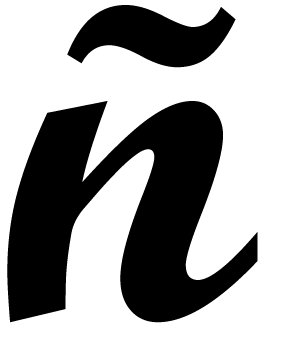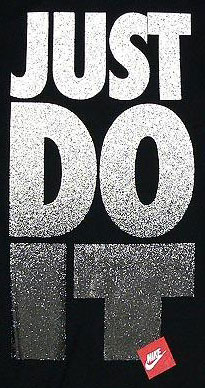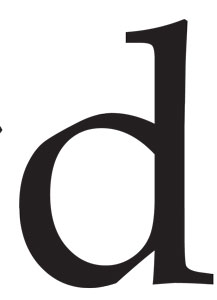Principles Of Typography Quiz

Dive into the world of design and typography with our comprehensive quiz that explores the fundamental principles of visual communication. This quiz not only delves into the core principles of design but also unveils the intricacies of typography, providing a holistic understanding of how to create visually appealing and effective communication.
From font selection to layout aesthetics, this quiz covers the essentials of typography, making it an ideal test for designers, students, and enthusiasts alike. Additionally, test your knowledge of Illustrator shortcuts, enhancing your proficiency in this powerful design tool.
Whether you're a seasoned designer or just starting your creative Read morejourney, challenge yourself with this quiz to refine your typography skills and unlock the secrets to efficient design in Illustrator. Take the Principles of Typography Quiz and elevate your design prowess!
- 1.
True or False Contrast is created when two elements are different.
- A.
True
- B.
False
Correct Answer
A. TrueExplanation
Contrast is indeed created when two elements are different. In design and visual arts, contrast refers to the difference in color, value, texture, shape, or any other visual element between two or more elements. By juxtaposing contrasting elements, artists and designers can create visual interest, emphasize certain elements, and create a sense of balance or harmony in their compositions. Therefore, the statement "Contrast is created when two elements are different" is true.Rate this question:
-
- 2.
True of False In Alignment elements should be placed on the page randomly?
- A.
True
- B.
False
Correct Answer
B. FalseExplanation
In alignment, elements should not be placed randomly on the page. Instead, they should be carefully positioned to create a visually appealing and balanced layout. Proper alignment helps to establish a clear visual hierarchy, making it easier for users to navigate and understand the content. By aligning elements, such as text, images, and buttons, designers can create a sense of order and organization, enhancing the overall user experience. Therefore, the correct answer is false.Rate this question:
-
- 3.
Short cut for copy Ctrl+_____
Correct Answer
cExplanation
one letterRate this question:
- 4.
Short cut for paste Ctrl+_____
Correct Answer
vExplanation
one letterRate this question:
- 5.
Short cut for grid Ctrl+_____
Correct Answer
'
"Explanation
one letterRate this question:
- 6.
Short cut for zoom in Ctrl_____
Correct Answer
=
+Explanation
one letterRate this question:
- 7.
What is the maxium number of different typecaces one should use in a design?
- A.
1
- B.
2
- C.
3
- D.
4
- E.
5
Correct Answer
B. 2Explanation
In design, it is generally recommended to use a maximum of two different typefaces. This is because using too many typefaces can create visual clutter and make the design appear unprofessional or inconsistent. By limiting the number of typefaces to two, the design can maintain a cohesive and balanced look, while still allowing for variation and contrast between different elements.Rate this question:
-
- 8.
Why should you not mix two different Oldstyle fonts?
- A.
There is too much contrast
- B.
There is too little contrast
- C.
You should mix oldstyle fonts
Correct Answer
B. There is too little contrastExplanation
Mixing two different Oldstyle fonts can result in a lack of contrast between the two fonts. Oldstyle fonts typically have similar characteristics, such as the slanted serifs and varying stroke widths, which contribute to their cohesive appearance. When two different Oldstyle fonts are mixed, the lack of contrast can make it difficult for readers to distinguish between the two fonts, leading to confusion and a less visually appealing design.Rate this question:
-
- 9.
What should you do with script and blackletter fonts?
- A.
Set script or blackletter in all uppercase
- B.
Set script or blackletter in title case
- C.
Set script or blackletter in or sentence case
- D.
Both A & C
- E.
Both B & C
Correct Answer
E. Both B & CExplanation
Script and blackletter fonts are typically used for decorative and ornamental purposes. These fonts often have intricate and elaborate designs that are best showcased when used in title case or sentence case. Setting script or blackletter fonts in all uppercase can diminish the aesthetic appeal and may not effectively convey the intended message. Therefore, it is recommended to use script or blackletter fonts in title case or sentence case, which is both option B and C.Rate this question:
-
- 10.
How many different decorative typefaces can you use in one design?
- A.
2
- B.
1
- C.
3
- D.
4
Correct Answer
B. 1Explanation
In one design, you can use only one different decorative typeface. This means that you can choose one unique decorative font to use for your design, but you cannot mix and match multiple decorative typefaces within the same design.Rate this question:
-
- 11.
What category of typeface is this?
- A.
Serif
- B.
Sans Serif
- C.
Modern
- D.
Slab Serif
Correct Answer
B. Sans SerifExplanation
Sans Serif typefaces do not have the small decorative lines at the ends of the characters, known as serifs. In this question, the correct answer is "Sans Serif" because it is the only option that does not have serifs. Serif typefaces have serifs at the ends of the characters, Modern typefaces have thin and consistent serifs, and Slab Serif typefaces have thick and block-like serifs.Rate this question:
-
- 12.
What category of typeface is this?
- A.
Serif
- B.
Sans Serif
- C.
Modern
- D.
Slab Serif
- E.
BlackLetter
Correct Answer
E. BlackLetterExplanation
BlackLetter is a category of typeface that is characterized by its ornate and decorative style, often resembling calligraphy or handwriting. It is typically used for formal or traditional designs, such as invitations or certificates. BlackLetter typefaces have intricate and elaborate letterforms, with thick, heavy strokes and sharp angles. This style of typeface was popular in medieval Europe and is often associated with Gothic or Old English script. It is distinct from other categories such as Serif, Sans Serif, Modern, and Slab Serif, which have their own unique characteristics and design elements.Rate this question:
-
- 13.
What category of typeface is this? Serif or Sans Serif
- A.
Serif
- B.
San Serif
Correct Answer
A. SerifExplanation
The given correct answer for this question is "Serif" because the term "serif" refers to the small decorative strokes or lines that are added to the ends of the main strokes in a typeface. Serif typefaces are characterized by these small lines, which can enhance readability and give a more traditional or formal appearance to the text.Rate this question:
-
- 14.
How much white space is on a letterhead?
- A.
60%
- B.
50%
- C.
90%
- D.
70%
Correct Answer
C. 90%Explanation
The correct answer is 90%. This suggests that a significant portion of the letterhead is left blank or contains white space. This could be intentional to create a clean and professional look or to allow room for additional information to be added later. The high percentage of white space indicates that the design of the letterhead prioritizes simplicity and readability.Rate this question:
-
- 15.
Is is ok to use UPPER CASEwhen using BlackLetter?
- A.
Yes
- B.
No
Correct Answer
B. NoExplanation
Using uppercase letters when using Blackletter is not recommended. Blackletter is a type of script font that originated in medieval Europe and is characterized by its ornate, intricate designs. Blackletter is traditionally written in lowercase letters, and using uppercase letters can disrupt the aesthetic and historical accuracy of the font. Therefore, it is not okay to use uppercase when using Blackletter.Rate this question:
-
- 16.
Is is ok to use Title Case when using a Scrit typeface?
- A.
Yes
- B.
No
Correct Answer
A. YesExplanation
Using Title Case with a Script typeface is acceptable because it can enhance the elegance and readability of the text. Script typefaces are designed to mimic handwritten letters, often with decorative and flowing elements. When used in Title Case, the uppercase letters in the script font can add emphasis and visual interest to the text, making it more appealing and engaging. However, it is important to use it sparingly and consider the context and purpose of the text to ensure that the overall design remains balanced and legible.Rate this question:
-
- 17.
How do you add contrast to an Oldstyle typeface?
- A.
Add a second oldstyle typeface
- B.
Ues one of its family members
Correct Answer
B. Ues one of its family membersExplanation
To add contrast to an Oldstyle typeface, one can use one of its family members. This means selecting a different style or weight within the same typeface family. By doing so, the overall appearance of the text can be varied, creating visual interest and contrast. This technique allows for a cohesive design while still introducing subtle differences that enhance the overall typographic composition.Rate this question:
-
- 18.
Which is not a member of a type family?
- A.
Bold
- B.
Italic
- C.
Black
- D.
Regular
- E.
Serif
Correct Answer
E. SerifExplanation
Serif is not a member of a type family because it refers to a specific type of font design that includes small decorative lines or strokes at the ends of characters. In contrast, Bold, Italic, Black, and Regular are all variations or styles within a type family that typically include different weights, slants, or thicknesses of the same basic font design.Rate this question:
-
- 19.
Which is stronger and offers more contrast?
- A.
Bold
- B.
Black
- C.
Light
- D.
Roman
Correct Answer
B. BlackExplanation
Black is stronger and offers more contrast compared to the other options. Bold refers to a font style that is thicker than regular text, but it may not necessarily have a higher contrast. Light, on the other hand, suggests a lighter weight or thinner font, which typically has less contrast. Roman typically refers to a regular or standard font style, which may not have as much contrast as black. Therefore, black is the strongest and offers the most contrast among the given options.Rate this question:
-
- 20.
What category of typeface is this? Serif or Sans Serif
- A.
Seirf
- B.
Sans Serif
Correct Answer
B. Sans SerifExplanation
This typeface is categorized as Sans Serif.Rate this question:
-
- 21.
What category of typeface is this? Serif or Sans Serif
- A.
Serif
- B.
Sans Serif
Correct Answer
B. Sans SerifExplanation
The given answer "Sans Serif" is the correct choice for the category of typeface. Sans Serif typefaces do not have small decorative lines at the ends of the characters, unlike Serif typefaces. They have a clean and modern appearance, making them suitable for digital interfaces and headings.Rate this question:
-
- 22.
What category of typeface is this? Serif or Sans Serif
- A.
Serif
- B.
Sans Serif
Correct Answer
B. Sans SerifExplanation
This typeface is categorized as Sans Serif because it does not have any small decorative lines or strokes at the ends of the letters. Sans Serif fonts are known for their clean and modern appearance, making them suitable for digital and screen-based designs.Rate this question:
-
- 23.
What category of typeface is this? Serif or Sans Serif
- A.
Serif
- B.
Sans Serif
Correct Answer
A. SerifExplanation
This typeface is categorized as Serif because it has small decorative strokes at the end of each letter. Serif typefaces are known for their traditional and formal appearance, and they are often used in print materials such as books, newspapers, and magazines. The presence of serifs helps guide the reader's eye along the text, making it easier to read and follow.Rate this question:
-
- 24.
What is a good point size to read text?
- A.
72pts
- B.
30pts
- C.
12pts
- D.
6pts
Correct Answer
C. 12ptsExplanation
A good point size to read text is 12pts. This size is considered standard for most body text as it provides a balance between readability and space efficiency. Text that is too small, such as 6pts, can strain the eyes and make reading difficult. On the other hand, larger sizes like 72pts or 30pts are typically used for headings or titles rather than body text. Therefore, 12pts is a suitable point size for comfortable and legible reading.Rate this question:
-
- 25.
What category of typeface did you type your name in for Whitespace-Letterhead? Serif or Sans Serif
- A.
Modern
- B.
Sans Serif
- C.
Slab Seirf
Correct Answer
C. Slab SeirfExplanation
The correct answer is Slab Serif. Slab Serif is a category of typeface that has thick, block-like serifs. It is characterized by its bold and strong appearance, making it suitable for headlines and titles. This typeface is often used in designs that require a combination of modern and traditional elements.Rate this question:
-
- 26.
The Three Principles of Design are like driving a CAR. What are these three Principles?
- A.
Content, Adjunct, Response
- B.
Critic, Analyze, Reinterpret
- C.
Contrast, Alignment, Repitition,
Correct Answer
C. Contrast, Alignment, Repitition,Explanation
The three principles of design are contrast, alignment, and repetition. These principles are compared to driving a car to emphasize the importance of balance and harmony in design. Just like driving a car requires control, coordination, and attention to detail, design also requires these principles to create visually appealing and effective compositions. Contrast helps create visual interest and highlight important elements, alignment ensures a cohesive and organized layout, and repetition adds consistency and unity to the design.Rate this question:
-
- 27.
Furtura is a Serif typeface
- A.
True
- B.
False
Correct Answer
B. FalseExplanation
The statement is incorrect because Futura is not a Serif typeface. Serif typefaces have small lines or strokes at the ends of the characters, while Futura is a Sans Serif typeface, which means it does not have these lines or strokes.Rate this question:
-
- 28.
Baskerville Oldface is an Oldstyle typface?
- A.
True
- B.
False
Correct Answer
A. TrueExplanation
Baskerville Oldface is indeed an Oldstyle typeface. Oldstyle typefaces are characterized by their diagonal stress, moderate contrast between thick and thin strokes, and angled serifs. Baskerville Oldface, designed by John Baskerville in the 18th century, exhibits these features and is considered a classic example of an Oldstyle typeface.Rate this question:
-
- 29.
White Space is important for the following reasons? (more than one can be checked)
- A.
It simplifies the design
- B.
Creates resting places
- C.
Organizes the page
Correct Answer(s)
A. It simplifies the design
B. Creates resting places
C. Organizes the pageExplanation
White space is important for several reasons. Firstly, it simplifies the design by providing breathing room between elements, making it easier for the viewer to understand and navigate the content. Secondly, it creates resting places for the eyes, allowing the viewer to take in information in a more comfortable and organized manner. Lastly, white space helps to organize the page by separating different sections and elements, improving readability and overall visual appeal.Rate this question:
-
Quiz Review Timeline +
Our quizzes are rigorously reviewed, monitored and continuously updated by our expert board to maintain accuracy, relevance, and timeliness.
-
Current Version
-
Nov 29, 2023Quiz Edited by
ProProfs Editorial Team -
Dec 20, 2015Quiz Created by
Ujjwalsaxena2007
 Back to top
Back to top




